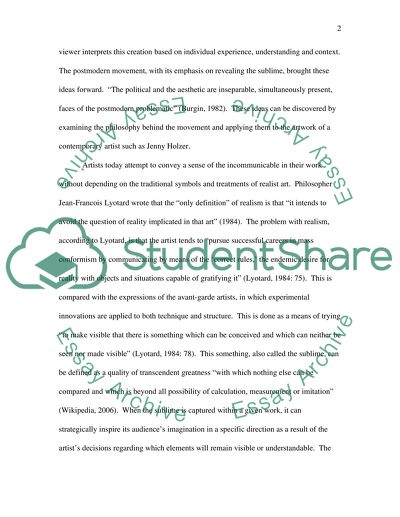Cite this document
(“Postmodernism as Artistic Movement Essay Example | Topics and Well Written Essays - 1250 words”, n.d.)
Postmodernism as Artistic Movement Essay Example | Topics and Well Written Essays - 1250 words. Retrieved from https://studentshare.org/visual-arts-film-studies/1556609-postmodernism-as-artistic-movement
Postmodernism as Artistic Movement Essay Example | Topics and Well Written Essays - 1250 words. Retrieved from https://studentshare.org/visual-arts-film-studies/1556609-postmodernism-as-artistic-movement
(Postmodernism As Artistic Movement Essay Example | Topics and Well Written Essays - 1250 Words)
Postmodernism As Artistic Movement Essay Example | Topics and Well Written Essays - 1250 Words. https://studentshare.org/visual-arts-film-studies/1556609-postmodernism-as-artistic-movement.
Postmodernism As Artistic Movement Essay Example | Topics and Well Written Essays - 1250 Words. https://studentshare.org/visual-arts-film-studies/1556609-postmodernism-as-artistic-movement.
“Postmodernism As Artistic Movement Essay Example | Topics and Well Written Essays - 1250 Words”, n.d. https://studentshare.org/visual-arts-film-studies/1556609-postmodernism-as-artistic-movement.


